Archive for March, 2009
Punamustavalkea – 1918 valokuvissa [Red, black and white: 1918 in photographs]
31 March 2009 | Mini reviews
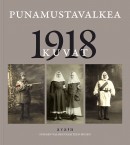 Punamustavalkea – 1918 valokuvissa
Punamustavalkea – 1918 valokuvissa
[Red, black and white – 1918 in photographs]
Toim. [Ed.by] Kukkonen, Jukka & Heikka, Elina
Helsinki: Valokuvataiteen museo /Avain, 2008. 167 p., ill.
ISBN 978-952-5524-65-9
€ 29, paperback
The book examines the Finnish Civil War and the photographic heritage of the year 1918 in articles which explore the background to the conflict. There are photographs of the ‘Red’ and ‘White’ guards, the events of the war, the prison of war camps, and the everyday lives of civilians. The publication presents the work of the photographers and film technicians who supported different sides in the conflict, and discusses the fate of the photographic archives after the war. A previously unknown collection of German propaganda pictures is also included. Archival research has demonstrated that there are more photographs from the period than was originally supposed; after the war they were confiscated and used to trace Red Guard soldiers who had gone missing. The book was published in connection with an exhibition at the Finnish Museum of Photography.
Henrika Tandefelt: Konsten att härska [The art of ruling]
27 March 2009 | Mini reviews
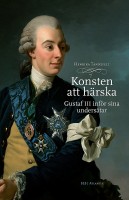 Konsten att härska. Gustaf III inför sina undersåtar
Konsten att härska. Gustaf III inför sina undersåtar
[The art of ruling. Gustav III in the presence of his subjects]
Helsingfors: Svenska litteratursällskapet i Finland / Stockholm: Atlantis, 2008. 439 p., ill.
ISBN 978-951-583-159-0
€ 35, hardback
The book, based on Henrika Tandefelt’s doctoral dissertation (2007), explores the meaning of kingship in Gustavian political culture. King Gustav III (1746–1792), who ruled over Sweden and its ‘Finnish territory’ with his machinery of government officials, devoted himself to phenomena which have received little attention from historians. Complicated rules of etiquette, ceremonies, tournaments, and various genres of art were the object of much study on the part of the king, who had both ethical and political aims in meddling in these. Tandefelt examines topics like royal favours – the granting of noble ranks, and medals and titles – and the rhetoric used by the king. The final part of the book looks at Gustav III’s actions against Russia during the 1788–1790 war.
Reima Luoto & al: Suomen sota 1808–1809 [The Finnish War of 1808–1809]
27 March 2009 | Mini reviews
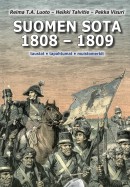 Luoto, Reima T.A. & Talvitie, Heikki & Visuri, Pekka:
Luoto, Reima T.A. & Talvitie, Heikki & Visuri, Pekka:
Suomen sota 1808–1809: taustat, tapahtumat, muistomerkit
[The Finnish War of 1808–1809: background, events, memorials]
Espoo: Fenix-Kustannus, 2008. 260 p., ill.
ISBN 978-951-862-183-9
€ 36, hardback
As a result of the 1808–1809 Russian-Swedish war, Finland, which had until then belonged to Sweden, was annexed to the Russian Empire, and Finland was established as an autonomous grand duchy. In this 200th anniversary year, several books about the war have already appeared. In its introduction, this book examines the birth and development of the idea of Finnish independence from the reign of Sweden’s King Gustav III onwards. Articles in the volume discuss the place of Finland and Sweden in Europe during the period of the Napoleonic war, and in an article which includes a survey of the present day, Finland’s OSCE envoy Ambassador Heikki Talvitie shows how Sweden has consistently adhered to the foreign policy it formed in the year 1812. Finally, there is a presentation of the real and fictional heroes of J.L. Runeberg’s Fänrik Ståls sägner (‘The Tales of Ensign Stål’, 1848–60), and a guide to the monuments in Finland and Sweden which commemorate the war.
Marjo T. Nieminen: Tiedon tyttäret [The daughters of knowledge]
20 March 2009 | Mini reviews
 Tiedon tyttäret. Oppineita eurooppalaisia naisia antiikista valistukseen
Tiedon tyttäret. Oppineita eurooppalaisia naisia antiikista valistukseen
[The daughters of knowledge. Female European scholars from antiquity to the Enlightenment]
Helsinki: WSOY, 2008. 445 p., ill.
ISBN 978-951-0-31824-9
€ 52, hardback
This richly illustrated work, the winner of the 2008 Finlandia Prize for Non-Fiction, tells the story of female scholars representing 25 different fields of study. The book also contains shorter introductions on more than a hundred women who have influenced the development of science. Hypatia of Alexandria, the prominent mathematician and astronomer murdered in 415 A.D. because she was considered politically dangerous, is one of the most famous of them, while others have been forgotten: in the 1660s – at the age of only thirteen – the pioneering entomologist, naturalist and explorer Maria Sibylla Merian made findings which would have called into question the current teachings of natural history, had they entered into wider public knowledge. Marjo T. Nurminen (born 1967). is an archaeologist specialised in the philosophy of science, and she works as the science editor for the Finnish Broadcasting Company.
Maire Gullichsen: Regnbågsfärger, mörka stänk. Minnesvandringar 1907–1928 [Rainbow colours, dark shadows. Journeys in memory 1907–1928]
19 March 2009 | Mini reviews
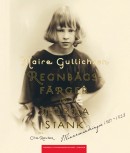 Maire Gullichsen: Regnbågsfärger, mörka stänk. Minnesvandringar 1907–1928
Maire Gullichsen: Regnbågsfärger, mörka stänk. Minnesvandringar 1907–1928
[Maire Gullichsen: Rainbow colours, dark shadows. Journeys in memory 1907–1928]
Red. [Ed. by] Cita Reuter
Helsingfors: Svenska Litteratursällskapet in Finland, 2008. 357 p., ill.
ISBN 978-951-583-165-1
€ 40, hardback
Maire Gullichsen, née Ahlström (1907–1990), an inheritor of the influential Ahlström timber, paper and metal company, was a prominent promoter of Finnish modern art, design and architecture and an art collector. In 1935, together with the architects Alvar and Aino Aalto and the journalist Nils-Gustav Hahl, she founded the design company Artek, which is still in business today. This book is based on her hitherto unpublished memoirs in which she recorded her life up to her marriage, to Harry Gullichsen, in 1928. Their home, Villa Mairea (1939) in the Ahlström family’s home district of Norrmark (Noormarkku) on Finland’s west coast, was designed by Alvar Aalto and remains one of the iconic examples of organic modernism. This richly illustrated volume gives a lively, detailed picture of a wealthy family during the tumultuous years of rapid industrialisation and struggle for independence in Finland. Maire Gullichsen’s daughter Professor Lilli Alanen and art historian Helen Woirhaye complement the author’s memoirs with articles providing information on the years after 1928.
Kimmo Nevalainen: Värttinä – mierontiellä ja punaisella matolla [Värttinä – from path of the outcast to red carpet]
16 March 2009 | Mini reviews
 Värttinä – mierontiellä ja punaisella matolla
Värttinä – mierontiellä ja punaisella matolla
[Värttinä – from path of the outcast to red carpet]
Helsinki: Like, 2008. 255 p., ill.
ISBN 978-952-01-0139-8
€ 29, paperback
The Finnish folk band Värttinä (‘Spindle’) formed in the village of Rääkkylä, North Karelia, in 1983 during the rise in popularity of modern Finnish folk music. The band’s energy and virtuosic style of singing, together with their unique sound, quickly brought them to the public’s attention, and the band has also enjoyed success abroad. In 2003 Värttinä composed the score for a world-wide musical production of Lord of the Rings. The book (also to be published in an English edition) presents the group’s history, as well as its recordings. It discusses Finno-Ugric folk music and the ways in which Värttinä modifies and modernises it. Kimmo Nevalainen is the author of an earlier book about Värttinä called Korkealta ja kovaa (‘Singing out loud’, Like, 2001).
Kalevalan kulttuurihistoria [A cultural history of the Kalevala]
16 March 2009 | Mini reviews
 Kalevalan kulttuurihistoria
Kalevalan kulttuurihistoria
[A cultural history of the Kalevala]
Toim. [Ed. by] Piela, Ulla & Knuuttila, Seppo & Laaksonen, Pekka
Helsinki: Finnish Literature Society, 2008. 578 p., ill.
ISBN 978-952-222-007-3
€ 63, hardback
The social and cultural influences exerted by Finland’s national epic, the Kalevala (the versions compiled by Elias Lönnrot were published in 1835, 1849 and 1862), are considerable: a large number of Finnish institutions still use it in their operations and public image. This book, which had its origin in an initiative by the Kalevala Society, takes the reader through Lönnrot’s work as a collector of folk poetry and literary compiler. The authors also discuss the epic’s ideology and its impact on Finnish cultural history. The book has five parts which relate the Kalevala to the arts, with particular reference to the visual arts and music, nationhood, politics, the study of folk poetry, and the parallelism of repetition. There are subjects included which have not previously featured in academic research, such as interpretations of the Kalevala in popular culture.
Tuomas Hoppu: Tampereen naiskaarti. Myytit ja todellisuus [The Tampere Women’s Guard. Myth and reality]
16 March 2009 | Mini reviews
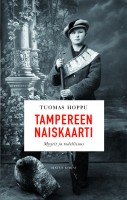 Tampereen naiskaarti. Myytit ja todellisuus.
Tampereen naiskaarti. Myytit ja todellisuus.
[The Tampere Women’s Guard. Myth and reality]
Helsinki: Ajatus Kirjat, 2008. 272 p., ill.
ISBN 978-951-20-7759-1
€ 34, hardback
Several thousand women took part in the battles of the 1918 Finnish Civil War, though not all were involved in the actual fighting. At full strength, the Tampere Women’s Guard numbered about 270 people, and it consisted primarily of industrial workers. Historian Dr Tuomas Hoppu has studied the fates of these women with the help of archival material and accounts by people who were alive at the time. Hoppu also describes the post-war period: the political trials of women, the conditions in the prison camps where the women were held, and the difficulties they encountered in returning to civilian life. According to Hoppu, the members of the women’s guard were genuine volunteers, while men were often forced to join the Reds under duress.
Hannele Huovi: Karvakorvan runopurkki [Furry pooch’s jar of verse]
4 March 2009 | Mini reviews
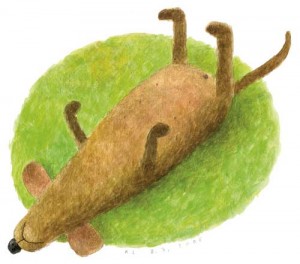 Karvakorvan runopurkki
Karvakorvan runopurkki
[Furry pooch’s jar of verse]
Kuvitus [Ill. by]: Kristiina Louhi
Helsinki: Tammi, 2008. 79 p.
ISBN 978-951-31-3974-2
€ 23.30, hardback
‘Methinks,/ said the sausage dog / who loved eating verse, that / poetry is tastier than bone’. Hannele Huovi (born 1949) has written poetry, books for children, novels and fables. The masterly rhymes of Finland’s grand old lady of children’s poetry, Kirsi Kunnas (born 1924), are hard to match, but Huovi comes close. For her, Finnish is easily pliable; her rhymes do not try to be too clever, her tone of voice is warm and humorous, and often the poems are little stories in the tradition of nonsense verse. Huovi’s sense of humour matches perfectly with Kristiina Louhi’s pastel pictures which often add surprising dimensions to the poetic stories. ‘So complete / trust can be: / with your paws skywards, /with your belly bared, you can / lie in the grass.’
Tove Appelgren & Salla Savolainen: Vesta-Linnéas svartaste tanke [Vesta-Linnea down in the dumps]
4 March 2009 | Mini reviews
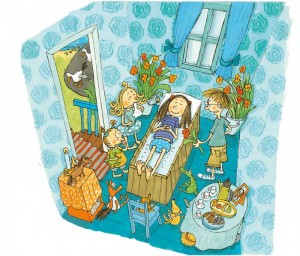
Vesta-Linnéas svartaste tanke
[Vesta-Linnea down in the dumps]
Helsingfors: Söderströms, 2008. 34 p., ill.
ISBN 978-951-52-2568-9
€ 17, hardback
Vesta-Linnea mieli mustana
Suomentanut [Translated into Finnish by] Tittamari Marttinen
Helsinki: Tammi, 2008. 34 p., ill.
ISBN 978-951-31-4204-9
€ 15.20, hardback
Vesta-Linnéa’s family consists of her mother, stepfather, two younger sisters and a big brother. In her opinion, little sisters can be unbearably stupid, and mother understands nothing. In this fourth book about Vesta-Linnéa, the enraged heroine imagines her own funeral after a serious row with her sisters: she would make a beautiful corpse, and then everyone would surely cry their eyes out. Or would they? Appelgren (born 1969) concisely depicts a popular daydream of revenge among little girls with humour. Salla Savolainen’s colourful, comical, detailed but relaxed cartoon-like illustrations work well with the text. And mother turns out to be not so lacking in understanding after all.
Juha Virta: Sylvi Kepposen pitkä päivä [Sylvia Prank’s long day]
3 March 2009 | Mini reviews
 Sylvi Kepposen pitkä päivä
Sylvi Kepposen pitkä päivä
[Sylvia Prank’s long day]
Kuvitus [Ill. by]: Marika Maijala
Helsinki: Otava, 2008. 33 p., ill.
ISBN 978-951-1-22373-3
€ 17, hardback
The long, narrow shape of this picture book is justified, as it literally gives the reader a clear perspective on its illustrations. Sylvi is a little girl whose legs one day grow so long that she is able to leap into space. Sylvi becomes a media phenomenon and the object of universal astonishment – until her legs return roughly to their former size. The book, by Juha Virta (born 1970) and his partner Marika Maijala (born 1974), owes much to nonsense writing and Lewis Carroll’s Alice in Wonderland, but the story and the pictures are an amazingly well-balanced combination, expressing humour, unceremonious wonder and a childlike ability to derive pleasure from moments of absurdity.
Esko-Pekka Tiitinen: Villapäät [Woollyheads]
3 March 2009 | Mini reviews
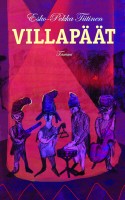 Villapäät
Villapäät
[Woollyheads]
Helsinki: Tammi, 2008. 134 p.
ISBN 978-951-31-4397-8
€ 17, hardback
Amid the angst and tangled human relationships that seem to dominate juvenile books, Villapäät provides young readers with ideals and the clothes to go with them, but eschews a market-driven focus on the self. 15-year-old Timppa and his friends form a band, and soon The Woollyheads will be the star of a charity fundraising concert. The global crisis and selfless relief work acquire a human face when Timppa sees a video on the life of Henry Dunant, the founder of the Red Cross – the only ‘trauma’ Timppa himself suffered as a child was caused by swallowing a Lego block. An important subsidiary role is played by a perceptive teacher who channels the youth into a beneficial, creative hobby. Esko-Pekka Tiitinen (born 1945) was awarded the 2008 Finlandia Junior Prize for Fiction for this book, his 16th.
Raili Mikkanen: Pähkinäpuinen lipas [The walnut wood box]
3 March 2009 | Mini reviews
 Pähkinäpuinen lipas
Pähkinäpuinen lipas
[The walnut wood box]
Helsinki: Tammi, 2008. 205 p.
ISBN 978-951-31-3855-4
€ 17, hardback
In this vivid juvenile novel, third in the series set in the 17th century, there are surprising points of comparison with the lives of young people today. The three daughters of the healer Briita seek a place of their own in a small rural community after their mother’s death. The youngest, Anna, inherits her mother’s walnut wood box. Unlike her peers, Anna is able to read and write, and the old documents found in the box explain why Briita was a violent mother who sought to relieve the pain of her life with medicinal herbs; her daughters are finally able to understand and forgive her. Through her sympathetic main character, Mikkanen (born 1941) skilfully constructs the image, familiar from classical literature, of a young woman who attains success despite her lowly origins.
Annika Luther: Brev till världens ende / Kirje maan ääriin [Letter to the ends of the earth]
3 March 2009 | Mini reviews
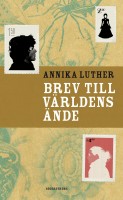 Brev till världens ände
Brev till världens ände
[Letter to the ends of the earth]
Helsingfors: Söderströms, 2008, 184 p. .
ISBN 978-951-52-2566-5
€ 18, paperback
Kirje maan ääriin
Helsinki: Teos, 2008, 197 p.
Suomentanut [Translated into Finnish by] Tarja Teva
ISBN 978-951-851-180-2
€ 21, paperback
This story involves the identity crisis of two boys, a discussion of the human ecological footprint and the growing loss of a relationship with nature. Viktor and Jeppe have been friends since childhood until the mysterious Maira upsets the boys’ relationship. Annika Luther (born 1958) is not content to write a traditional triangle drama – instead she seasons it with Viktor’s betrayal, an act committed in a fit of jealousy that has unforeseeable consequences. The novel’s power lies in its ever-increasing tension, as the trust between the boys breaks down. The plotline is occasionally unconvincing, but at the heart of the novel is the fickle human mind, stripped of all its trappings. The book received the 2008 Topelius Prize.
Marja-Leena Lempinen: Punainen lumme [The red lily]
3 March 2009 | Mini reviews
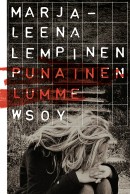 Punainen lumme
Punainen lumme
[The red lily]
[Helsinki: WSOY, 2008. 232 p.
ISBN 978-951-0-34434-7
€ 21, hardback
16-year-old Ella’s story is told with gusto and vitality. The novel deals critically, in a way that will appeal to young readers, with questions of Internet etiquette, personal protection and the right to one’s own body. Lempinen depicts the sexual exploitation of a young girl in realistic terms, but does not over-dramatise it. Ella, however, needs to regain her mental equilibrium in a psychiatric hospital, with the help of the understanding staff. The gift of a red lily she receives from friends develops into a beautiful symbol of her gradual attainment of her sexual identity. As in her earlier novels for teens, Lempinen (born 1950) gives an important role to the experience of nature, and this is a leading factor in Ella’s recovery.
